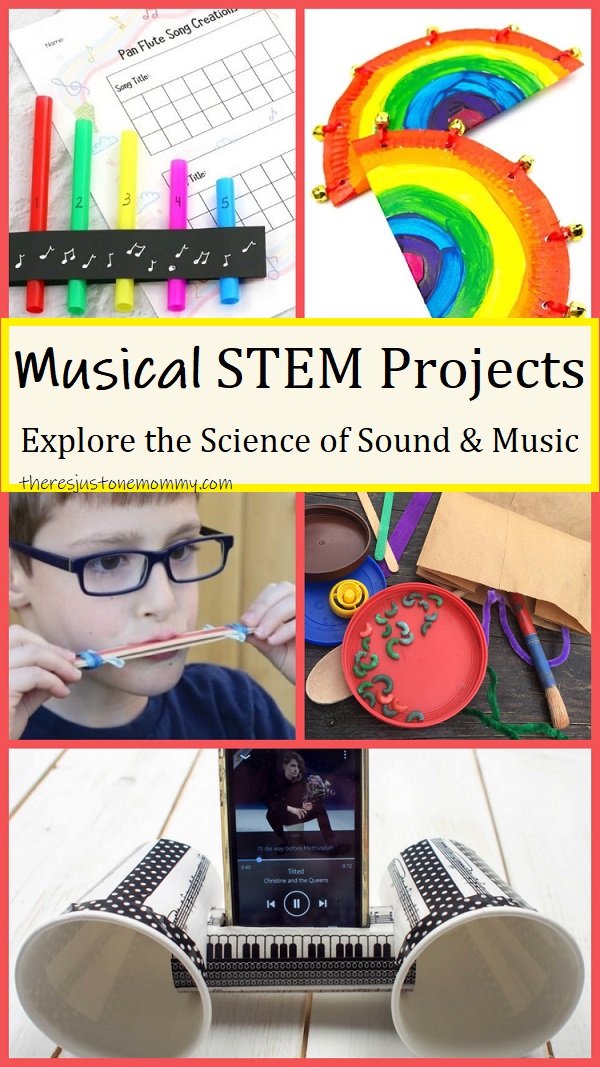Music Stem Activities
When it comes to incorporating Science, Technology, Engineering, and Math (STEM) concepts into everyday learning activities for children, music can be an excellent tool. Music not only offers a fun and engaging way for children to learn, but it can also help with critical thinking skills, problem-solving, and creativity. In this blog post, we'll explore music stem activities and how they can benefit children's education.
Challenges of STEM Learning and How Music Can Help
While STEM learning is essential for children to gain skills for their future careers, it can often be a struggle for them. Many children find science, math, and engineering concepts abstract and dull, which can lead to disinterest and disengagement in learning. This is where music can help. Music can make learning STEM concepts more enjoyable and accessible to children.
What are Music STEM Activities?
Music STEM activities are activities that use music to teach STEM concepts. These activities include experiments, creating instruments, making soundwaves, and exploring the mathematics of rhythm and musical scales. These activities help children grasp concepts related to science, technology, engineering, and math in a fun and interactive way.
Benefits of Incorporating Music STEM Activities
There are multiple benefits of incorporating music STEM activities into children's learning, including:
- Helping children develop critical thinking skills
- Encouraging problem-solving skills through experimentation
- Developing creativity and imagination in children
- Improving spatial reasoning and visual-spatial skills
- Promoting teamwork and collaboration skills
- Encouraging a love for learning STEM concepts
Creating DIY Instruments: Exploring Sound and Materials
One of the most accessible and interactive music STEM activities is creating DIY instruments. This activity can be done with simple materials found at home and can teach children how music instruments work. By experimenting with materials, children can also learn about sound waves and how they travel. For example, children can make their own musical shakers by filling containers with various materials such as beans, rice, or beads and listen to how the materials make different sounds.
Another way to explore is to create simple stringed instruments, such as a rubber band guitar, which can teach children about pitch and vibration. Children can also experiment by changing the length of the rubber bands or using different thicknesses of strings to create different sounds.
Sound and Music Scales: Understanding Frequencies and Rhythm
Another fun activity is studying sound and musical scales. By exploring sound waves and music scales, children can learn about frequency, pitch, and rhythm. This activity can be done by creating a simple instrument using a ruler and rubber bands and then measuring the length of the strings to create different pitches. Children can also clap along to rhythm challenges or create their own rhythm patterns using body percussion or percussion instruments.
Questions and Answers about Music STEM Activities
Q: What are some other examples of music STEM activities?
A: Other examples of music STEM activities include creating sound maps, exploring the science of sound with water glasses, and studying acoustics by building soundproof rooms.
Q: What age group is suitable for music STEM activities?
A: Music STEM activities can be tailored to any age group, from preschool to high school.
Q: How can music STEM activities be incorporated into classroom lessons effectively?
A: Music STEM activities can be incorporated into classroom lessons by aligning activities with current STEM curriculum goals or using music to reinforce concepts already being learned. They can also be used as standalone activities or as part of a larger project-based learning approach.
Q: What role does music play in STEM education?
A: Music can help bridge the gap between abstract STEM concepts and real-life applications, making learning more accessible and enjoyable for children.
Conclusion of Music STEM Activities
Music STEM activities are a great way to teach children STEM concepts in a fun and interactive way. These activities help children develop critical thinking, problem-solving, and creative skills while fostering a love for music and learning. By incorporating music into STEM learning, we can make education more engaging and accessible for children of all ages and backgrounds.
Gallery
Kindergarten Music | Music For Kids, Music Activities For Kids, Music

Photo Credit by: bing.com / kindergarten teachingideas
Music STEM Activities | There's Just One Mommy

Photo Credit by: bing.com / stem activities music leave comment june
1000+ Images About Music Activities On Pinterest | Kids Songs, Free

Photo Credit by: bing.com / music activities kids science preschool musical projects experiment
SOUND Activities | Stem Curriculum, Music Creation, Teaching Music

Photo Credit by: bing.com /
STEM / STEAM For Kid | Music Activities For Kids, Preschool Music

Photo Credit by: bing.com /